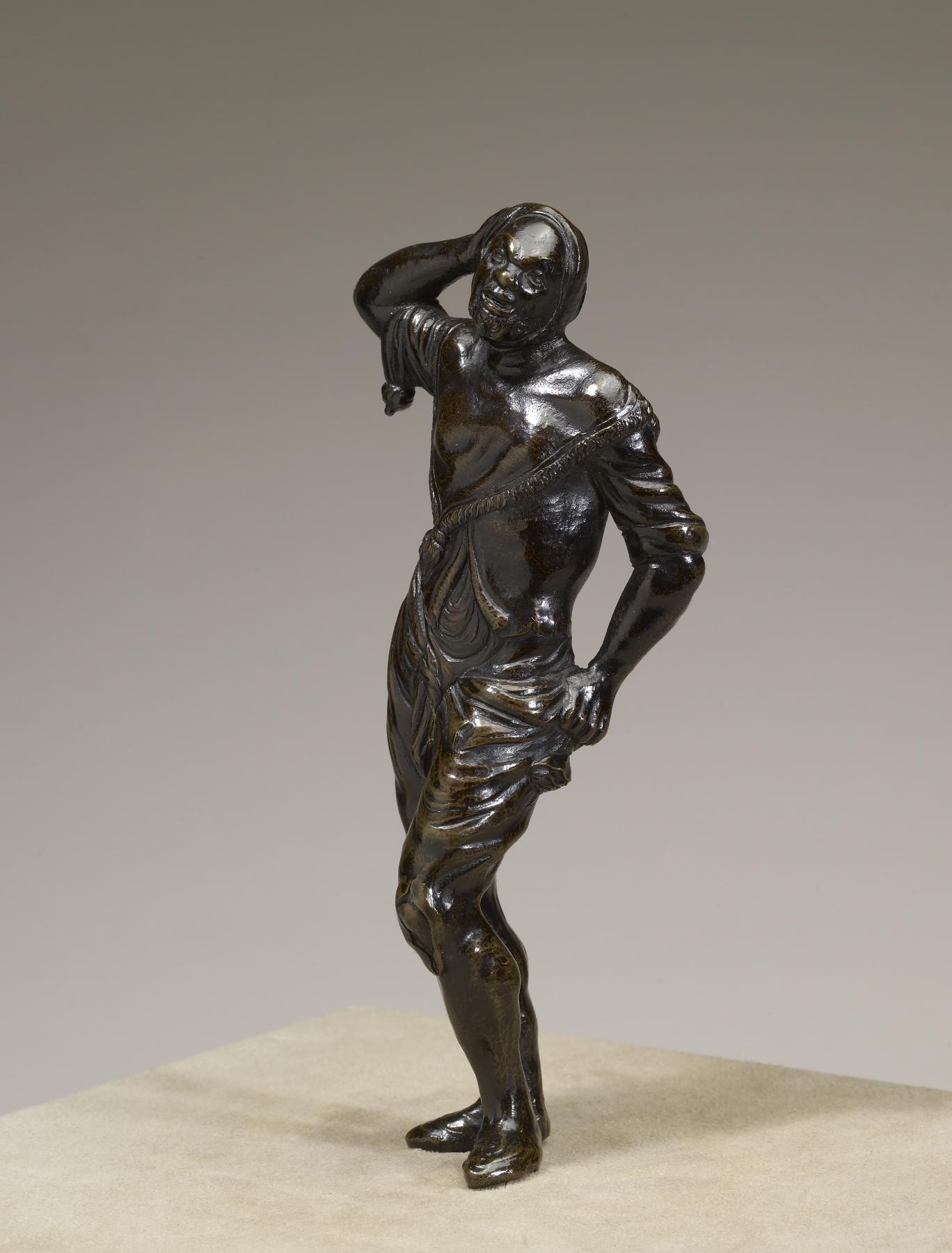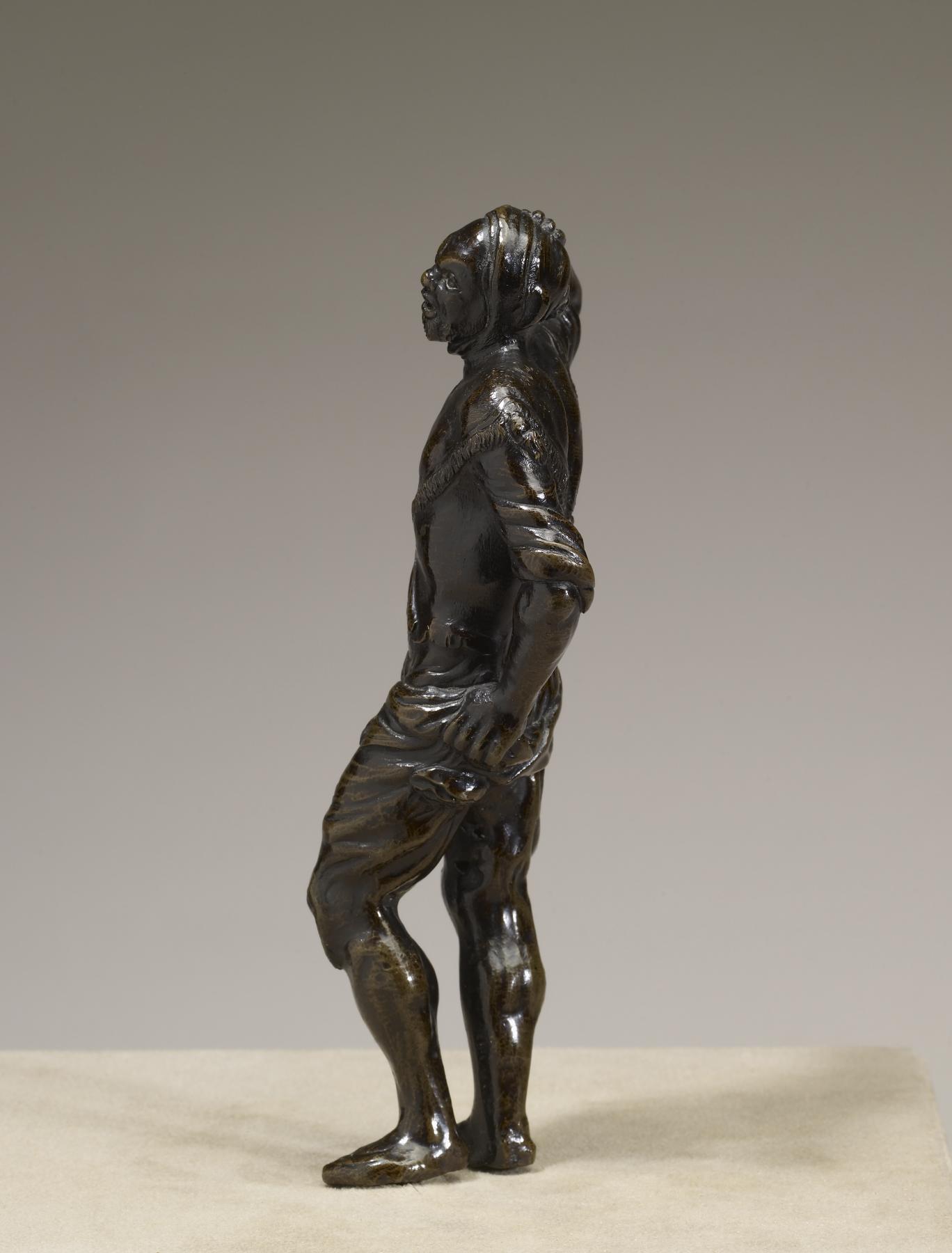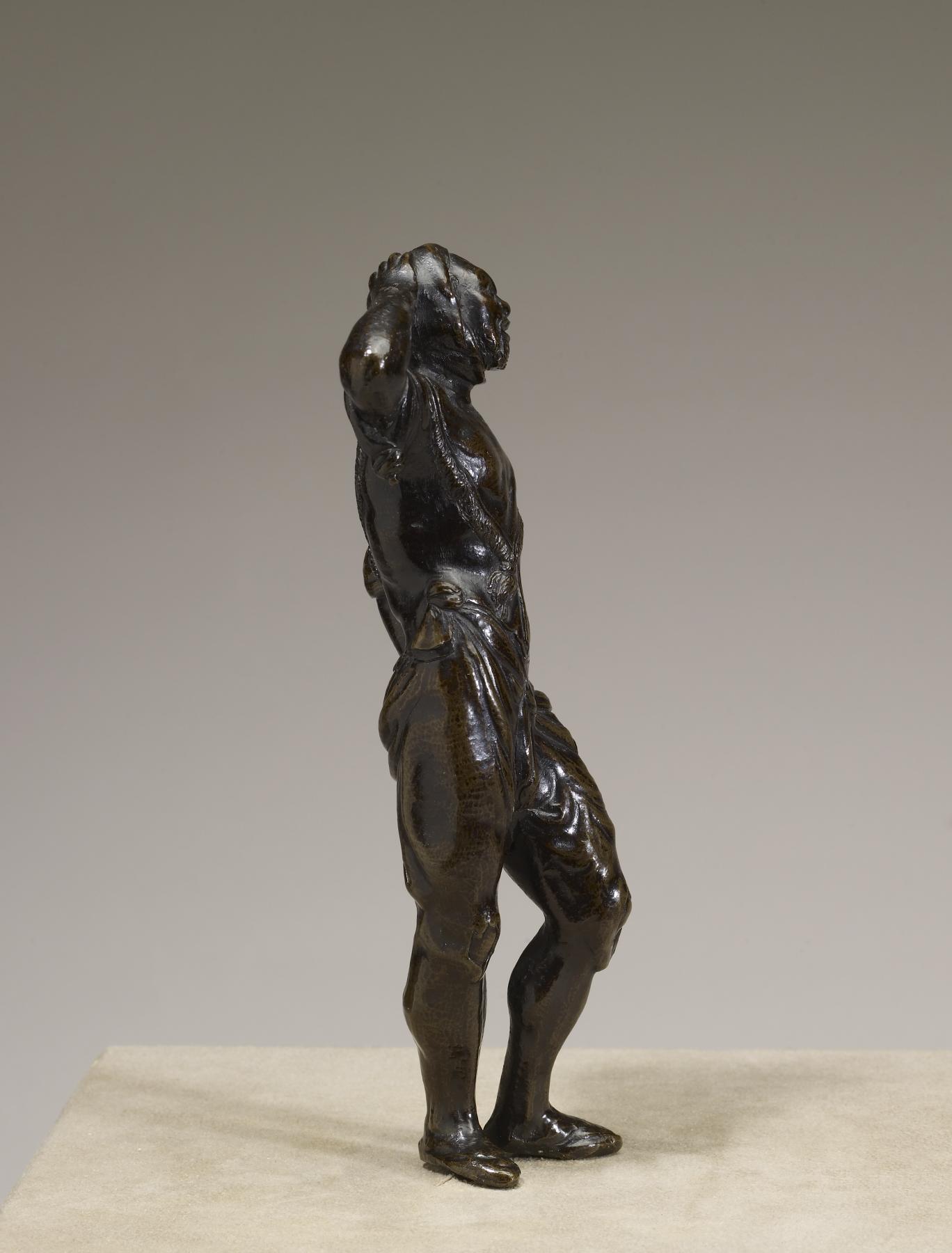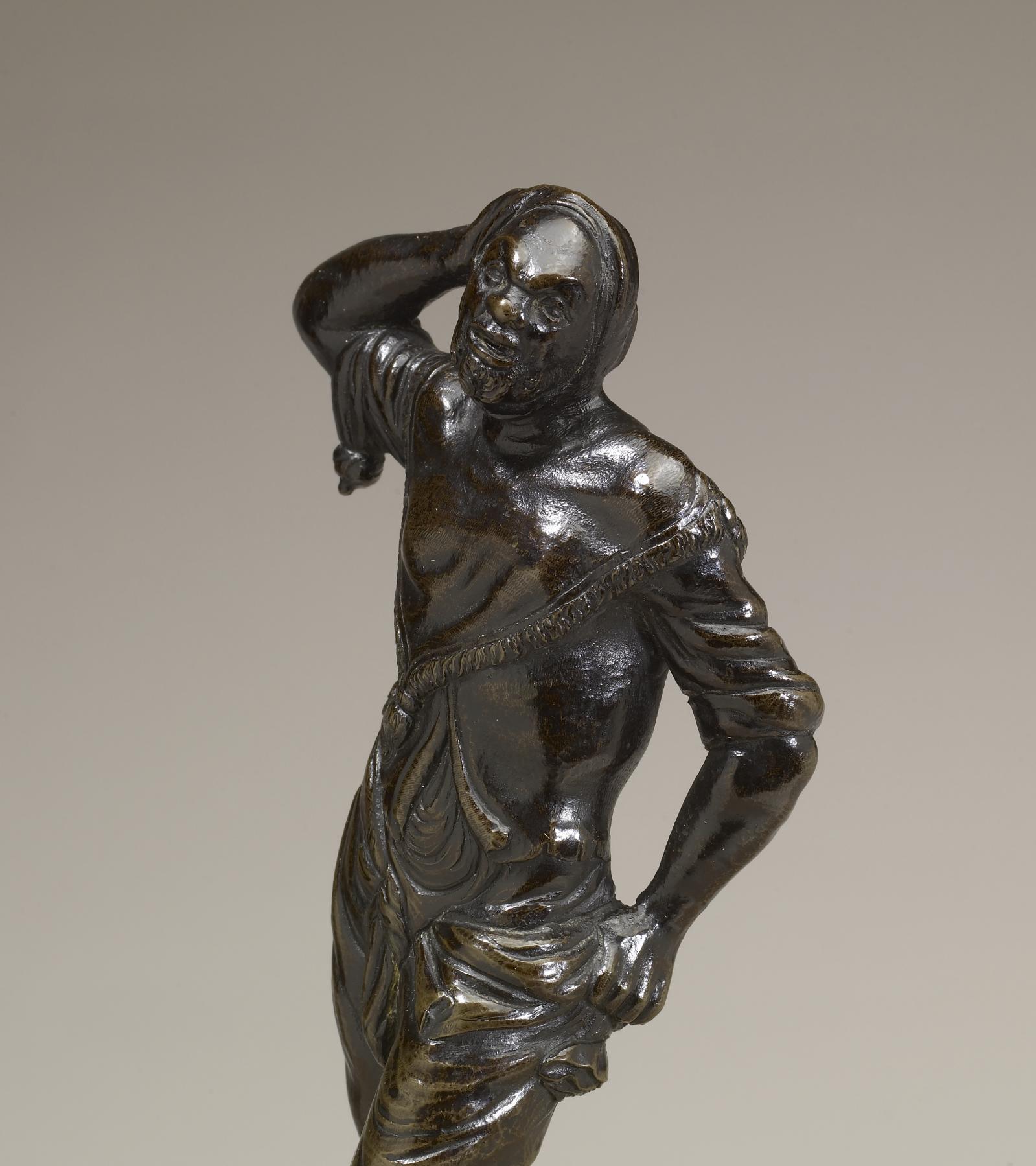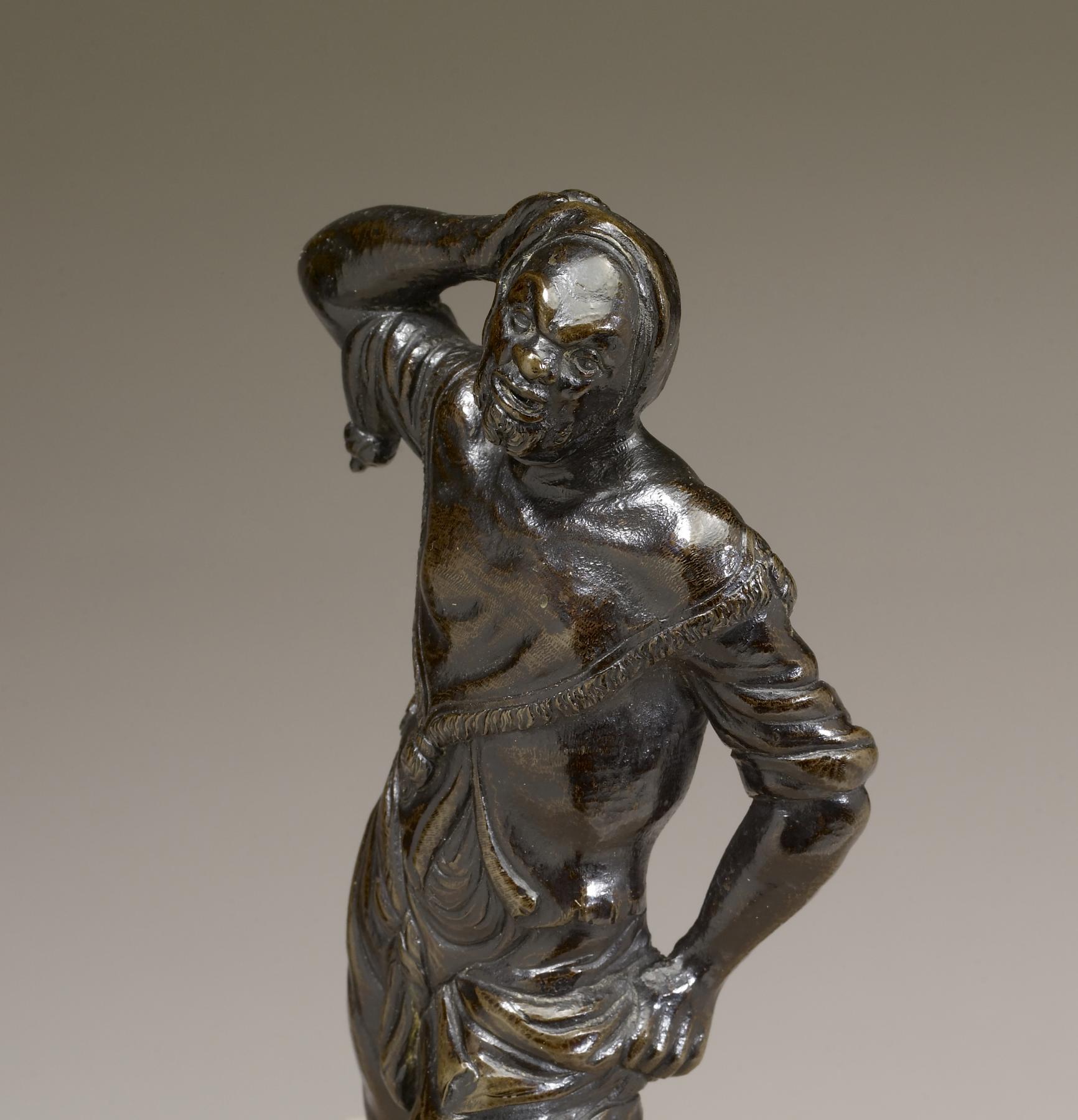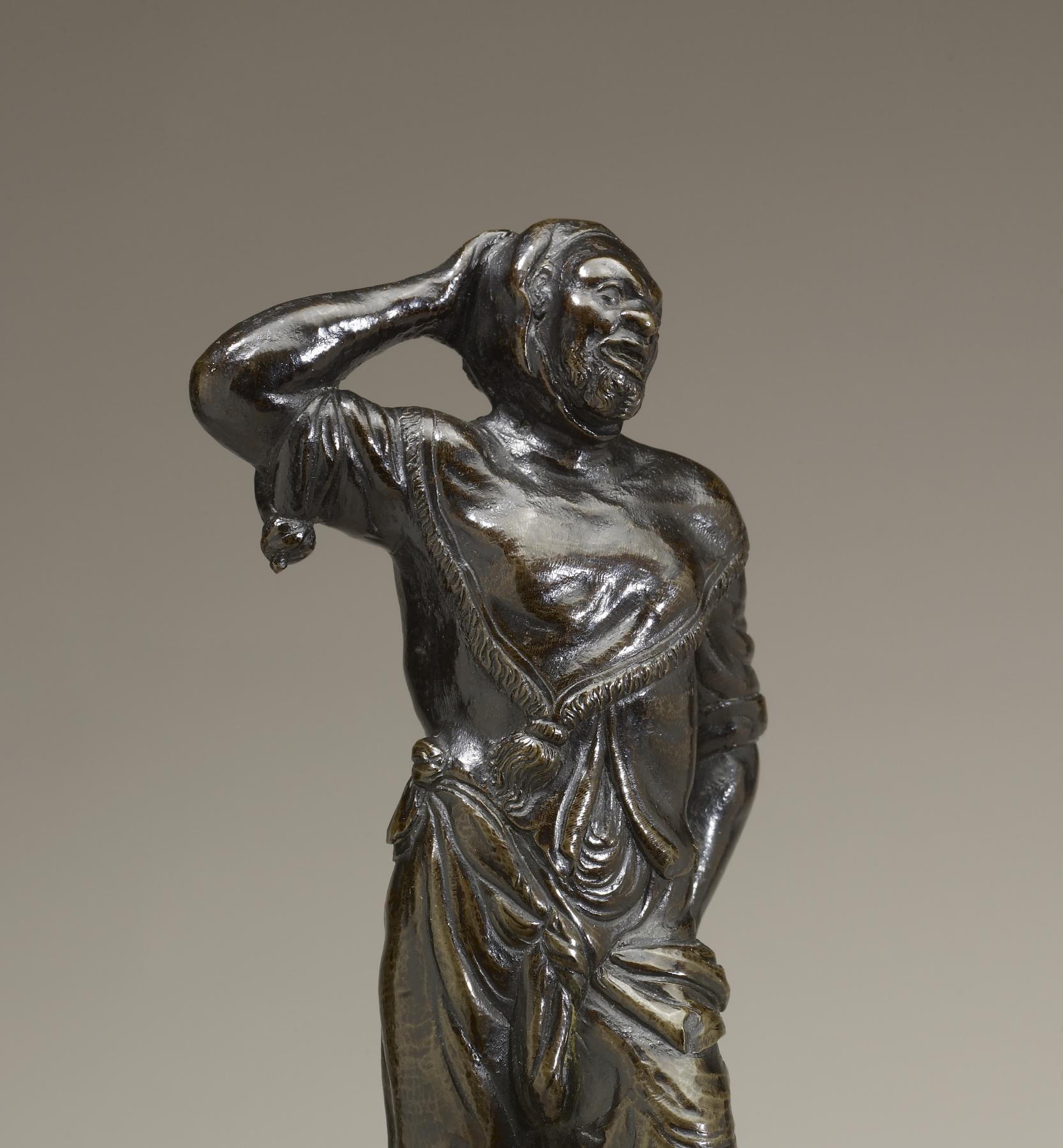Court Jester
(Baroque Europe )
This figure of a man can be identified as a court jester by his leather jerkin (jacket), hood, and powerful physique. Jesters were court entertainers known primarily either for their wit or physical prowess as wrestlers.
The personalization of the figure’s features suggests that it is based on an actual individual. Mochi worked for the ruling Medici family in Florence; research may uncover whether the jester figure was inspired by a member of that court.
Provenance
Provenance (from the French provenir, 'to come from/forth') is the chronology of the ownership, custody, or location of a historical object. Learn more about provenance at the Walters.
Abbot Guggenheim Collection, New York [date and mode of acquisition unknown]; Sale, Sotheby's, New York, January 27, 2011, lot 450; Walters Art Museum, January 27, 2011, by purchase.
Exhibitions
| 2012-2013 | Revealing the African Presence in Renaissance Europe. The Walters Art Museum, Baltimore; Princeton University Art Museum, Princeton. |
Conservation
| Date | Description | Narrative |
|---|---|---|
| 9/12/2012 | Examination | Examined for Exhibition |
Geographies
Italy, Florence (Place of Origin)
Measurements
H of jester: 7 1/16 x W: 2 13/16 x D: 1 3/4 in. (17.9 x 7.1 x 4.5 cm)
H with tang: 7 13/16 in. (19.9 cm)
Credit Line
Museum purchase, Renaissance & Baroque Fund, a generous grant, and individual donations through the Banner, Lewis, Tanner Circle, 2011
Location in Museum
Accession Number
In libraries, galleries, museums, and archives, an accession number is a unique identifier assigned to each object in the collection.
In libraries, galleries, museums, and archives, an accession number is a unique identifier assigned to each object in the collection.
54.3083

